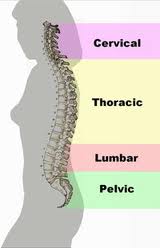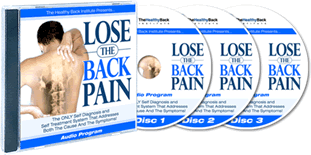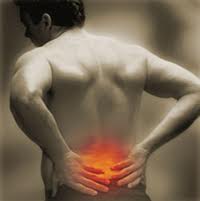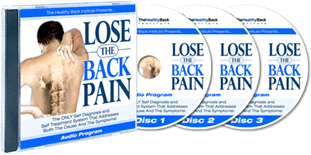What is Back Pain?

Back Pain Treatment
Back pain is a very common medical problem that people will experience at some point in their lives. For certain reasons some will be more prone that others. Back pain can be divided into neck pain, upper back pain, middle back pain and lower back pain. Back pain may be moderate or severe, quick or constant.
Back Pain Facts
Half of all working Americans have back pain symptoms each year. Back pain is one of the most common excuses for missed work and the second most common reason for visits to the doctor’s clinic. Americans spend at least $50 billion each year on back pain.
Symptoms of Back Pain
- Sudden and piercing sensation in the neck, upper back, middle, or lower back — especially after some strenuous activities or lifting heavy objects.
- Recurring ache, stiffness or numbness anywhere from the base of the neck to the hips.
- Persistent ache in the lower or middle back, especially after sitting or standing for long periods.
- Unable to stand straight without having intense muscle spasms in the low back.
- Pain that radiates to the buttock and down the leg.
The most common type of back pain is Acute Pain which last less than 6 weeks. These forms of back pains usually recover on their own. If it gets worse and does not respond to back pain treatments, such as pain relievers, using ice or heat, back pain exercises, and rest, then it is advisable to consult a doctor. If the back pain lasts more than three months then it is considered as Chronic Pain.
Causes of Back Pain
Our back is made up of a complex structure of bones, ligaments, muscles, tendons and disks. Back pain occurs when there are problems associated with any of these component parts including the following:
Structural and mechanical problems
- Ruptured Disks. Disks cushion the vertebrae in your spine. The soft material inside a disk may sometime swell or rupture and press on a nerve.
- Tense Muscles
- Spasms
Strain
- Strained muscles and ligaments
- Heavy lifting
- Wrong sitting or standing posture
- Sudden awkward movement
- Falls and accidents
Medical conditions
- Scoliosis
- Osteoporosis
- Spondylolisthesis
- Spinal stenosis
- Arthritis
- Kidney stones
- Fibromyalgia
- Endometriosis
- Infections
- Pregnancy
- Stress
- Spine cancer
Caudia Equina syndrome (This is a serious neurological problem that cause weakness in the legs, numbness in the groin area, and loss of bowel or bladder control.)
Who Are At Risk Of Getting Back Pain?
- Ageing. Older people are more prone to getting back pain, especially when you above 30 years old.
- Poor physical fitness.
- Obesity. Too much weight can stress your back causing tension and pain.
- Occupation. Laborious jobs that require you have to lift, push, or pull heavy things while twisting your spine or mundane desk jobs that require you to sit or stand for long periods.
- Sports. People who are active in sport, whether professional or leisure, are prone to getting back injuries, especially sport that involves the upper body.
- Heredity. Some people suffer from a genetic form of arthritis that affects the spine
- Gender and Race. Black women are more prone to suffer from lower back pain than white women.
- People who Smoke.
- People who suffer from Stress, Anxiety and Depression.
How Is Back Pain Diagnosed?
Your doctor will normally check your medical history and perform a physical examination including:
- Evaluate your ability to sit, stand, squat, walk and lift your legs
- Test your reflexes with a rubber reflex hammer
Your doctor will determine through these preliminary assessments where the pain originate from. If the doctor believes you have a more serious condition like fracture, tumour or infection then one or more of the following tests may be required:
- Blood and urine tests. This is to check if you have any infection or underlying diseases.
- EMG (electromyography). This will check for herniated disks and whether the spinal passageway is narrowing (spinal stenosis).
- X-ray. This is used to diagnose whether you have broken bones or spinal fractures. It will also check the alignment of your spine and look for degenerative diseases of the joints.
- Bone scan. This will look for osteoporosis or tumours
- Spinal taps. These are samplings of the fluid surrounding the spinal cord. Traces of pus, blood or high levels of protein can indicate infection or spinal disease.
- Magnetic resonance imaging (MRI) or computerized tomography (CT) scans.
These scans are used to look for herniated disks and other disk abnormalities, joint enlargement and problems with ligaments, tendons, nerve and blood vessels.
Back Pain Treatment
There are many type of treatment for back pain and it all depends on what kind of pain you suffering from. Acute back pain usually gets better without any treatment, but to help ease the pain you may want to take paracetamol, aspirin, or ibuprofen and take a short rest.
If these over the counter drugs and pain relievers do not work then your doctor will probably suggest one or more of the following treatments and therapies.
Hot or Cold Packs (or Both)
Hot or cold packs can relieve sore, stiff backs. Heat reduces pain and muscle spasms. Cold numbs deep pain and reduces swelling. Using hot or cold packs only help to relieve pain, but this treatment will not cure chronic back pain.
Exercise
Suitable exercises can help to soothe chronic pain but may not be appropriate for acute back pain. It is advisable to consult your doctor or physiotherapist for the best types of exercise to do.
Medications
Over-the-counter Analgesic drugs such as acetaminophen and aspirin or other prescribed pain medications. Topical analgesic creams, salves and ointments for application onto the skin over the area of pain.
Nonsteroidal anti-inflammatory drugs (NSAIDs) such as ibuprofen, ketoprofen, and naproxen sodium to reduce both pain and swelling.
Muscle relaxants and some antidepressants such as amitriptyline may be prescribed for some types of chronic back pain.
Behaviour Changes
Learn to use less force when you lift, push, and pull heavy things to reduce the stress on your back. Exercise the right ways, learning to relax, and sleep can help to ease your back pain. Adopt a healthy eating habit and stop smoking will certainly help.
Injections
If other methods don’t work, your doctor may suggest steroid or numbing shots to lessen your pain. An anti-inflammatory drug known as cortisone may be injected around your spinal cord to reduce your pain, but this is usually a temporary solution.
Alternative and Complementary Treatments
There are many alternative treatments to help ease your back pain. The more popular ones are:
Chiropractic Care.
Chiropractors use hands-on spinal manipulation to restore mobility to joints and align the musculoskeletal structure so that the body can heal itself without surgery.
Acupuncture.
This Chinese practice inserts thin sterilized needles at certain points on your body. These points are connected by pathways which create a flow of energy called Qi. This has the effect of correcting any imbalance of Qi and enhances the flow of energy which helps relieve pain and restore health.
Transcutaneous Electrical Nerve Stimulation (TENS).
This involves sending mild electrical pulses to electrodes pasted on the body. The pulses are transmitted through wires from a small battery-powered unit. The frequency and intensity of this treatment depends on the nature of your back pain. However this technique has not been scientifically proven.
Massage.
A good massage may help loosen your overworked muscles and help you to relax. This is usually a short term relief.
Inversion Therapy
Inversion therapy involves hanging upside down, taking gravitational pressure off the nerve roots and disks in your spine. This effectively stretches your spine to help relieve your back pain. This technique does not offer permanent relief for back pain and may not be safe for everyone, especially those with certain medical conditions.
Yoga
Yoga teaches you how to move and stretch your body in different styles. These styles offer great health benefits by developing your flexibility, strength, and balance. It also helps people to concentrate their energy on breathing and maintaining posture. The breathing increases oxygen flow to the brain and create a rhythm within the body and mind. All these, together with meditation will help you to dissipate stress and anxiety, therefore, relieving your back pain.
Herbal Treatments
Studies have shown that some herbal treatments are helpful in reducing back pain.
This is the bark of the white willow tree and has pain-relieving properties similar to aspirin.
- Devil’s claw (Harpagophytum procumbent)
Is useful in fighting inflammation or relieve pain in arthritis, headache, and low back pain.
- Capsaicin Cream or Plaster
Capsaicin cream is found to be effective in reducing the amount of substance P, a neurochemical that transmits pain–causing an analgesic effect.
Back Pain Surgery
Unless your back pain is really bad or if the situation is an emergency, surgery is usually the last resort. Surgery is suggested only if all other treatment options have been tried and tested do not work. Minimally invasive surgery is often used for common symptoms and causes of back pain.
Depending on the condition of your back pain, you can opt for one of several different types of traditional spine surgical procedures including:
- Discetomy. This is performed when you have a torn or herniated intervertebral disc. The protruding disc that is putting pressure on the nerve root is removed.
- Fusion. This procedure unites two or more vertebrae by using bone grafts and metalwork to provide more strength. Depending on the age and fitness level of the patient, recovery may take up to one year.
- Laminectomies. This procedure relieves the pressure on the nerves, by trimming excessive lamina thereby enlarging the spinal canal. Recovery ranges from 2 to 6 months.
- Removal of Tumour. This relieves the pressure on the nerve and also to prevent it from spreading. Recovery depends on the type and size of tumour and the general health of the patient.
All the Back Pain Treatments covered here are the common options and can be effective if used and performed correctly. However, if you have tried most of them and your back pain refuse to go away, then it is time to consult your spine doctor. There may be an underlying medical condition that is causing the back pain. Only medical practitioners and back specialists are able to offer the best advice, diagnosis and appropriate treatment.
The Breakthrough System that’s PROVEN to Help Over 64,182 Folks (and counting) Eliminate Back Pain… Sciatica… and Herniated Discs… in less than 30 Days! Click Here

Lose The Back Pain






